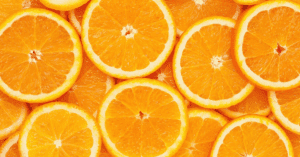To be happier, you need to eat at least five portions of fruit and vegetables every day.
This was discovered by researchers from the University of Warwick in England and the University of Queensland in Australia, who conducted a study on nutrition and good mood published in the American Journal of Public Health.
The survey involved a sample of over twelve thousand people and according to the research, it takes two years of healthy eating, but it has been shown that eating two portions of fruit and at least three of vegetables can lead to a more peaceful life.
But what are the foods of a good mood? The foods that make us feel good, also called « mood foods », are all those that positively affect the production of hormones that regulate mood.
Do you want to smile more? Have a feast of green leafy vegetables such as spinach and broccoli, they are rich in minerals and vitamins, able to influence emotional states or go to the greengrocer and buy bananas, red fruits and kiwis, which help fight free radicals .
We also make room for dried fruit, to stem anxiety and fatigue.
« The key – explains biologist Maurizio Gallo – is found in a specific precursor that stimulates the hormone of happiness: serotonin.
It is called tryptophan and is an essential amino acid, the only one that is not absorbed into the cells, but remains in the bloodstream, being immediately stored in the central nervous system: this is the reason why it quickly increases good mood and general well-being » .
We know this, but it is good to remember: fruits and vegetables help to live better, because they help prevent the development of chronic diseases.
They contain substances that, for example, are useful for the muscles and the heart such as potassium.
Vitamin A contained in carrots and pumpkins is a natural supplement for eye health and the vitamin C contained in kiwifruit and cabbage helps the immune system.
Vitamin D, the « sunshine vitamin », is essential for the metabolism of calcium and phosphorus and for the mineralization of bones.
First of all it is contained in mushrooms and broad-leaf vegetables such as chard, broccoli and chicory, in dried fruit, almond in pole position.
Antioxidants protect against cardiovascular diseases and some cancers, fiber from diabetes and are useful in the diet, because they give a great sense of satiety.
For those who play sports, the saying « An apple a day keeps the doctor away » is even more valid, it is a super recommended fruit, because it is highly digestible and then the orange for the presence of vitamin C, which helps protect cells from oxidative stress caused by physical activity.
Fruits, vegetables and beauty
Prevention, but also sustainability: we can transform fruit and vegetables into beauty products by preparing face masks, hair oils, moisturizers in the kitchen.
How do you make a homemade fruit mask?

It is very simple, because the preparation is always based on a quantity (about 120 g) of pureed fruit, to which other ingredients are added that will make the hand-made cosmetic even more effective, such as lemon juice, honey , clay and many others.
The homemade mask is applied on the face avoiding the eye contour and immediately after preparing it, it is left to act for 10 minutes, rinse with warm water and then finish the beauty treatment, spreading on the skin the face cream used routinely.
The advice is to apply natural masks even twice a week.
You could prepare a nice mask for dry skin based on banana and extra virgin olive oil or an anti-wrinkle mask with citrus fruits that is made with orange juice and clay.
How about a moisturizing mask with carrot juice and honey?
To exfoliate the skin instead, a refreshing mask based on yogurt and avocado.
For the eye contour, the most delicate area of the face to always keep hydrated, the most natural and effective remedy is always cucumber, absolutely fresh from the fridge, cut into thin slices.
So lie down, relax and let it work for 20 minutes. Fruits and vegetables must be eaten every day, but they must be consumed correctly.
Fruits, vegetables: extracts and centrifuged
To vary we can indulge ourselves with the preparation of juicy extracts and centrifuged.
What is the difference?
Certainly they are both good and healthy and allow the consumption of some raw vegetables, which are usually eaten only cooked, but starting from the consistency here is the first difference: the extract is thick and creamy, the centrifuged is more liquid.
The first has a longer process and is obtained through squeezing, which in turn takes place by operating an auger, or a worm screw that squeezes fruit and vegetables.
The centrifuge, on the other hand, which works with thin blades, is an immediate operation, fruit and vegetables are cut into pieces in a few seconds, so if we are in a hurry in the morning, go for a juice for breakfast, it takes a moment and then off you go.

To prepare excellent juices, it is good to use seasonal fruit and vegetables at room temperature and drink them immediately, because after the first 10 minutes, modification processes take place.
The advice is to equip yourself with a centrifuge or a juice extractor, because with a small appliance you can eat in a healthier way by preparing fresh and natural fruit and vegetable juices even for children.
In this period we can make a green juice with lettuce, kiwi and banana or a detox juice with apple, celery and carrot or with apple, carrot and ginger.
Speaking of ginger, it is a very valuable ally in fighting bad breath.
According to an oriental technique, the secret is to chew a slice dipped in a little vinegar after meals.
Seasonal fruit and vegetables in October
October seasonal vegetables: beetroot, broccoli, romanesco broccoli, carrot, cauliflower, onion, green bean, mushrooms, lettuce, eggplant, sweet potatoes, peppers, radicchio, rhubarb, radish, turnip, shallot, celery, truffles, pumpkin, zucchini.
Seasonal fruit in October: peanuts, bananas, persimmons, chestnuts, figs, prickly pears, kiwis, raspberries, apples, pomegranates, walnuts, hazelnuts, pears, grapefruits, plums, grapes.


